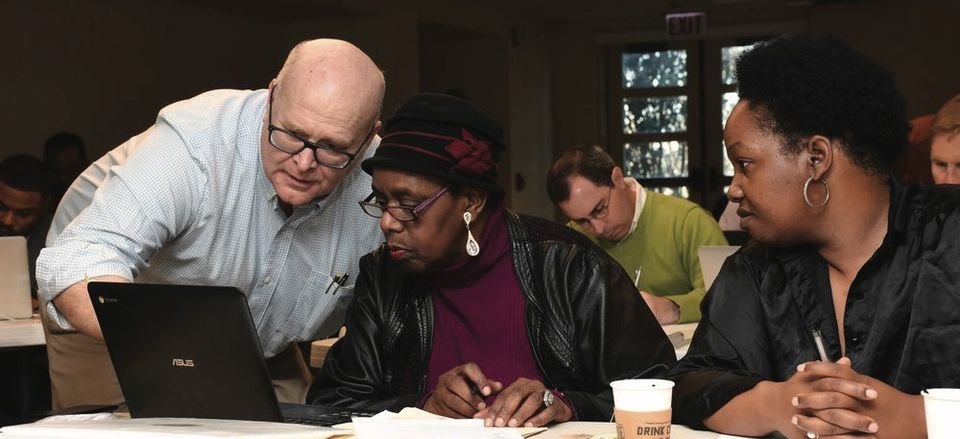Yesterday I got a question from a member of the Neighborhood Development Facebook Group.
They wanted to know why there are a number of low down payment mortgage products for 2-4 unit buildings, but no low down payment construction loan products for new 2-4 unit buildings. The reason there is low down payment money for building but not for new construction is the kind of underwriting that gets done on these agency loans. Construction loans have a short term typically only 1 or 2 years. Most construction loans for the 1-4 unit buildings covered by agency loans are made by local community banks.
Agency loans (insured by The VA, FHA, Fannie Mae, Freddie Mac) are either sold to Freddie Mac or if they are guaranteed by the VA, FHA, or Fannie Mae, they could be purchased by a conduit financial firm and bundled into a Mortgage Backed Security and sold on Wall Street, primarily to institutional investors. The market for those securities wants a long term instrument that is backed by the insuring agency. As 1 or 2 year construction loan is not long term like a 15 or 30 year mortgage secured by a building.
There are exceptions to the agencies underwriting construction risk in with Renovation Loans which convert to 30 year mortgages. The FHA has the 203(k) Loan. Fannie Mae has their HomeStyle Loan, Freddie Mac has their ChoiceRenovation Loan, and the VA has a Renovation Loan.
Note: The Agencies classify 1-4 unit loans as "Single Family" loans (even if they have more than a single dwelling unit....).
I rank these below in order of my preference and note things unique to each loan product. You should compare the term sheets and figure out which loan product is the best fit for you, and be sure to find a local :
#1 Freddie Mac ChoiceRenovation
Pros: A generous Loan to Completed Value. Administration of the Loan draws is easier than the FHA and Fannie Mae process. No Freddie Mac Certification of the Contractor doing the work is required.
Private Mortgage Insurance (PMI) is required for loans that will have less than 20% equity after the project is completed. You can get rid of PMI when you can demonstrate that with an appraisal that you have 20% equity or more. Freddie Mac has a push on for underwriting 2-4 units projects.
75% of the gross rent from the tenants counts toward the borrowers income to qualify for the loan. The LTV ratio come down to 85% for 2-4 units. LTV (-using completed value) is 80% for a 2 unit and 80% for a 3 -4 unit loan
Cons: If you are going to live in one of the 2-4 units, Freddie does not count your rent as income to qualify for the loan, but the borrower must occupy one of the units for at least one year.
The construction period is expected to be 12 months or less. If the construction is delayed and goes past the 12 month milestone the local lender has to get and extension from Freddie Mac. Not hard to do in the current construction climate, but one more step.
This loan can be used to build a new ADU within the 2-4 units framework.
Allows up to 35% non-residential if in compliant with local zoning. While this can be a separately metered unit or units, I recommend labeling the space "home office" and not commercial to avoid confusing the local underwriters who tend to refer your deal to their local commercial lenders for a 5-7 year commercial mortgage if they see the word commercial on the plans. (I recommend putting the non-residential space on the House/common area electrical meter and gas meter and just build the utilities for the non-residential space into the rent.
Lenders like this loan because they can deliver it to Freddie Mac before the construction is completed, increasing their liquidity. Freddie Mac has recourse if they take the loan before construction is limited and will make the lender cure any problem with the loan before they will buy it. This is a better set up for the local lender than the Fannie Mae Loan.
#2 Fannie Mae HomeStyle
Pros: Easier to get through underwriting than the FHA 203(k). Less hassle to process construction draws than the FHA 203(k).
HomeReady is Fannie Mae's PMI and is required for loans that will have less than 20% equity after the project is completed. You can cancel PMI when you can demonstrate that with an appraisal that you have 20% equity or more.
The house does not have to be occupied by the borrower, so this is a better loan for investors who do not expect to live in one unit for at least one year.
75% of the gross rent from the tenants counts toward the borrowers income to qualify for the loan. You can get a limited cash out when the loan converts from construction to the 30 year mortgage.
Allows up to 35% non-residential if in compliant with local zoning. While this can be a separately metered unit or units, I recommend labeling the space "home office" and not commercial to avoid confusing the local underwriters who tend to refer your deal to their local commercial lenders for a 5-7 year commercial mortgage if they see the word commercial on the plans. (I recommend putting the non-residential space on the House/common area electrical meter and gas meter and just build the utilities for the non-residential space into the rent.
This loan can be used to build a detached ADU within the 2-4 units framework.
Cons: Loan amount cannot exceed 75% of the completed value or the cost of the purchase + the cost of renovation --Whichever is _Less_ This typically means that it is a 75% LTC loan unless the appraiser's opinion on the Completed Value is lower (at which point you may be over building for the neighborhood -or the appraiser is just wrong. Once the appraisal report hits your file if you disagree you can ask them to take another look and provide some information they may not have considered, but usually this means you need to go to another lender who will engage another appraiser.
The Fannie Mae HomeStyle Loan requires the borrower to complete their Homeowner Education program.
#3 FHA 203(k)
Pros:
The HUD 40001 Underwriting guidance which cover the FHA 203(k) and 203(b) loans has a specific section title Mixed Use (added in 2915) which allows up to 49% non-residential if in compliant with local zoning.
While this can be a separately metered unit or units, I recommend labeling the space "home office" and not commercial to avoid confusing the local underwriters who tend to refer your deal to their local commercial lenders for a 5-7 year commercial mortgage if they see the word commercial on the plans. (I recommend putting the non-residential space on the House/common area electrical meter and gas meter and just build the utilities for the non-residential space into the rents.
Cons: The Underwriting process can take longer than the Fannie or Freddie Loans and the administration of the loan draw is more grief as well.
Detached new ADU's are not allowed, but you can create an additional dwelling units within the renovated building if allowed under local zoning.
All 203(k) loans require FHA's PMI for the _life of the loan_. That's less burdensome for a one of two unit loan, but can be pretty stiff on a 3 or 4 unit loan. You cannot cancel the PMI.
Completion of FHA’s Homeowner Education program is required.
Refinancing the 203(k) or the 203(b) (—the standard 1-4 unit FHA mortgage) is the only way to get out of the PMI requirement. It is very difficult to refinance this loan if you are living in one of the units. If you have more than 35% of the building area dedicated to non-residential use you will need to convert some of that space to storage rented by the residential tenants or a bike room or dog washing station to get within the 35% residential cap for the Fannie and Freddie loan product in a refinance.something. Your other option would be a local community bank's commercial mortgage where the underwriting typically doesn't car how much non-residential or if you live in the building. Loan terms are 5-7 years with a potential 5-7 year renewal.
#4 VA Purchase Renovation Loan
Pros: 0% down if the borrower has a Certificate of Eligibility from the VA
Cons: Only available for veterans with a certificate of Eligibility.
Renovation costs are limited to $50,000.
Options for local lenders can be pretty limited.



